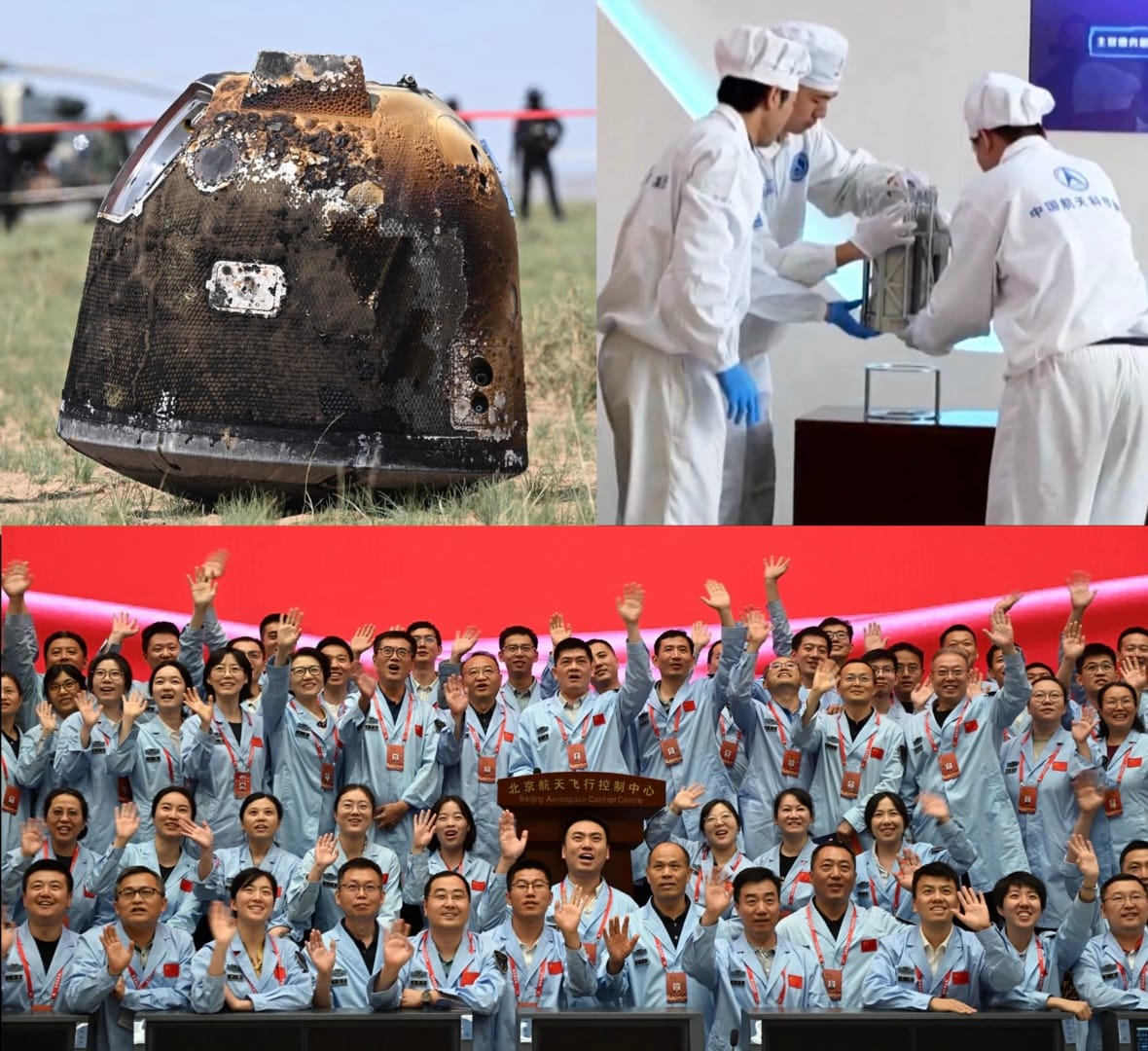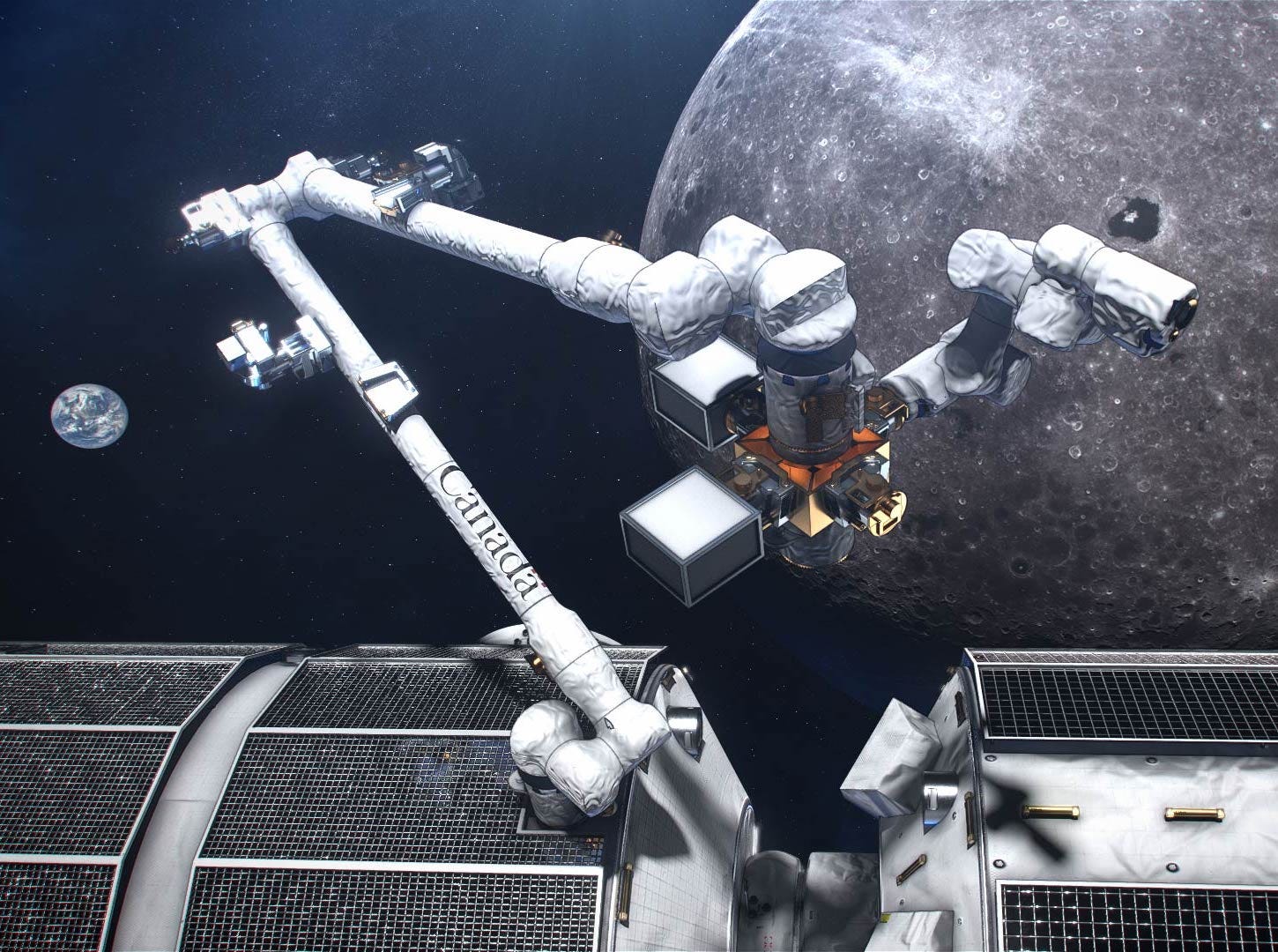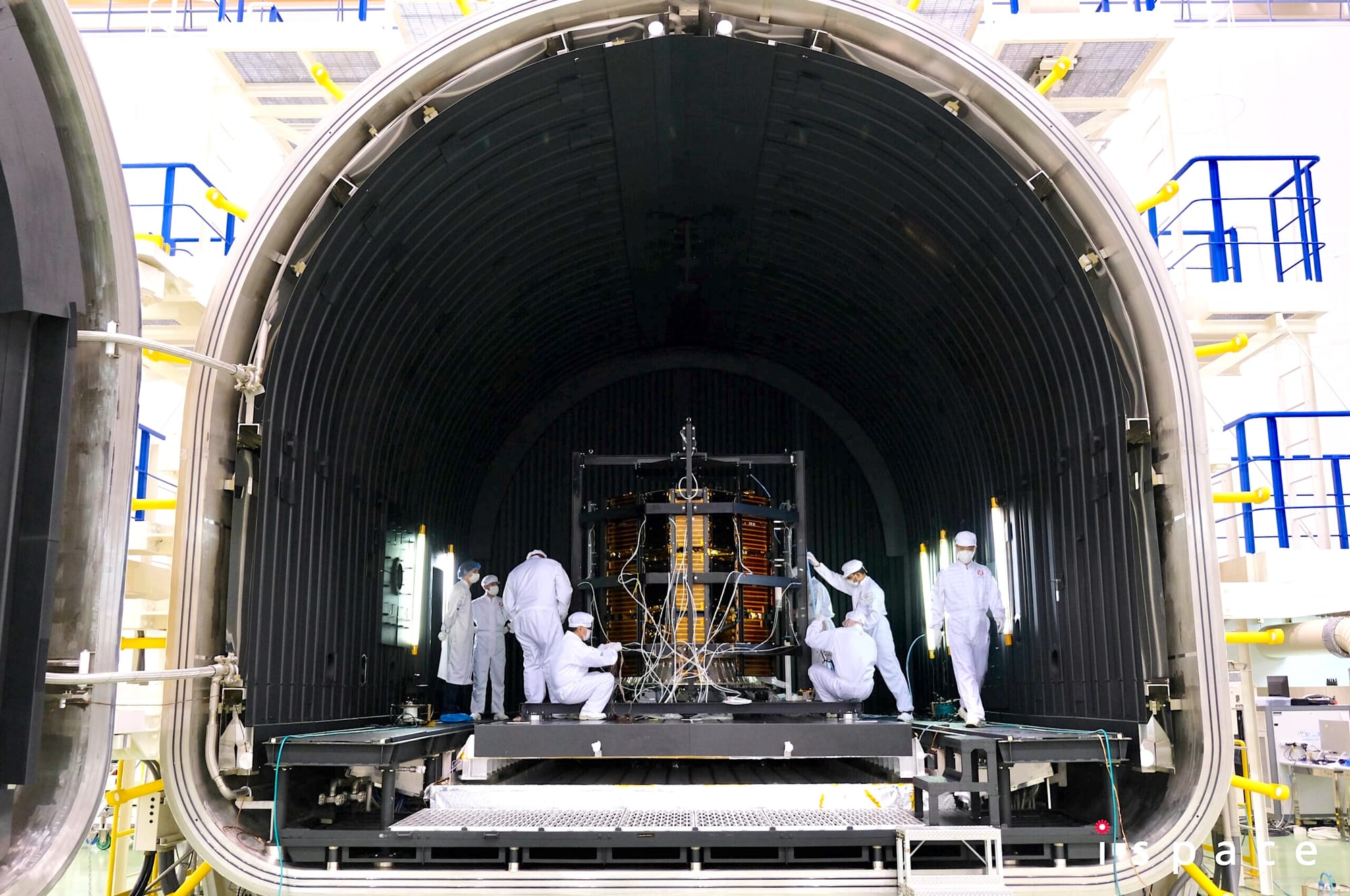Moon Monday #182: Lunar samples on Earth, a Canadian robotic arm, lander testing, and more

The first ever samples from the Moon’s farside are now cached on Earth
After successfully collecting samples from the Moon’s farside and stowing them in lunar orbit earlier by excellently orchestrating multiple Mooncraft over months, CNSA made the Chang’e 6 mission’s lunar orbiter module fly towards Earth on June 21. It hosted the 300-kilogram reentry capsule, which contained 1.93 kilograms of lunar samples. When the orbiter module reached 5,000 kilometers away from Earth on June 25, it released the reentry capsule, which later performed a bounced atmospheric reentry in Earth’s atmosphere and safely descended and landed in China’s northern Inner Mongolia Autonomous Region at 06:07 UTC.
As Andrew Jones reports, the capsule was airlifted to the mission-designer CAST (the China Academy of Space Technology) in Beijing on June 26. Technicians lifted the lunar sample capsule out of the reentry capsule during a ceremony celebrating the mission’s success. Next up, the National Astronomical Observatories of Chinese Academy of Sciences (NAOC) will unseal the sample container and prepare the farside lunar samples for storage. The Hong Kong Polytechnic University (PolyU), which designed Chang’e 6’s samplers mechanisms as Leonard David notes in his nice sampling explainer, has also setup lunar sample storage and sample analyzer facilities for scientific studies.
The Chang’e 6 samples will be scientifically even more valuable than the Chang’e 5 samples. After results start coming in from later this year, the Chang’e 6 samples are expected to help scientists solve a whole host of Moon mysteries such as understanding the distinct lunar farside volcanism and why the farside is so enigmatically different from the familiar nearside—which is necessary to understand not just Luna’s evolution but that of our Solar System.
With the Chang’e 6 technology mission now accomplished, China now firmly looks forward to sending Chang’e 7 and Chang’e 8 to the Moon’s south pole in 2026 and 2028 respectively, followed by landing humans on Luna by end of decade, and then building a hybrid crew-robotic long-term Moonbase in the 2030s.
One robotic arm to rule them all

Following two incremental contracts, the Canadian Space Agency (CSA) is now awarding CAD $1 billion (USD $730 million) to MDA Space for the final design, assembly, and testing of the Canadarm3 robotics servicing system, which is Canada’s contribution to the NASA-led international Gateway lunar orbital habitat launching later this decade. In return for providing and operating this core element, Canada has secured seats for their astronauts aboard multiple crewed Artemis missions, starting with Jeremy Hansen flying on NASA’s Artemis II mission around the Moon and back mid-decade.
The highly autonomous Canadarm3 robotics system, including its dextrous arm, will perform many critical functions at the Gateway. These include robotic inspection, maintainence, and repairs, helping assemble new station modules and capture visiting spacecraft, aid astronauts during spacewalks, install and support scientific experiments, and more. As part of the contract, MDA will make a ground segment at its global headquarters in Brampton, Ontario to command and control Canadarm3.
Canadarm3 has also bagged Canada dedicated time to perform science & technology experiments aboard the Gateway. In March 2023, CSA announced it will invest $76.5 million over eight years in Canada-led Gateway experiments. CSA has also funded seven biology-related Gateway experiments totaling $1.25 million.
- Related: A gist of Gateway science
Many thanks to Off Planet Research and Arun Raghavan for sponsoring this week’s Moon Monday. If you love this curated community resource too, join them and support my work.
Mission updates

- ispace Japan announced on June 27 that its second lunar lander M2 (“RESILIENCE”), which is now assembled and has some payloads integrated too, has passed thermal vacuum testing ahead of its Falcon 9 launch end of 2024. ispace engineers also verified commanding and receiving data from the lander. The tests are part of a slew of launch and space environmental tests ispace is conducting at JAXA’s Tsukuba Space Center. In April, ispace Europe completed environmental testing of the qualification model of its micro rover, the flight model of which will fly on this second ispace lunar lander.
- For the upcoming Draper-led lunar farside mission part of NASA’s CLPS program, wherein ispace’s US subsidiary is providing the APEX lander, ispace US announced signing a deal with the Swedish Space Corporation (SSC) for the mission’s Earth-Moon communications. Specifically, the mission’s communications will be facilitated through SSC’s four lunar space ground stations across the globe. SSC’s ground stations have recently (commercially) served Moon missions by several space organizations, like for ISRO’s Chandrayaan 3 landing.
- Astrobotic unveiled a terrestrial landscape in Mojave for testing lunar hardware called the Lunar Surface Proving Ground (LSPG), which mimics conditions on the Moon’s south pole—from its rocky terrain and topography to the challenging long-shadow-lighting caused by the perpetually near-horizon Sun. In particular, Astrobotic will use LSPG to test its Griffin lander’s navigation and precision landing systems before the flight lander carries NASA’s VIPER CLPS rover to study water ice on the Moon’s south pole mid-decade. Astrobotic’s first Moon mission in January this year failed, which has delayed VIPER’s launch.
More Moon
- ESA and the DLR Institute for Planetary Science are ideating on a “Polar Explorer” rover mission to study water ice on the Moon, which sounds similar to CNSA Chang’e 7, NASA VIPER, and the JAXA-ISRO LUPEX missions.
- Following the selection of three Lunar Terrain Vehicle proposals for an Artemis crew-capable rover, NASA has released two white papers on lunar mobility and lunar cargo to summarize the agency’s thinking on these key elements comprising Moon to Mars architecture efforts. Recall that NASA conducted its second annual Moon to Mars Architecture Concept Review in November 2023, after earlier conducting a Concept Review and Definitions Document. With such a consultative process, the agency hopes to optimally refine its Moon to Mars Objectives and the strategies employed to achieve them.
- I’m delighted that the Open Lunar Foundation (a Moon Monday sponsor) presented at the inaugural UN conference on Sustainable Lunar Activities. A related project Open Lunar has been developing is a Lunar Registry of objects and activities, hoping to improve transparency and understanding of Moon missions globally.
